“Knowledge is learned but wisdom must be lived” – Anne Wilson Schaef
Travel philosophy ~ But of course, to plan an unbelievably memorable adventure that can be cherished in your minds and shared.

Map of trip
THE GOAL is to travel locally; to see the culture, history, architecture and art; to meet wonderful new people from all walks of life and countries while trying to stay mostly in private homes or home based B&B’s and camping when a convenient room cannot be found, if equipped. If a hotel is the only place available try to stay in small family run hotels. What better way to learn about your host country and their culture than to meet and stay with the people and see how they live? Learn to live and think locally, enjoy the new experiences. Respect the cultural and leave your dogma at home, relish in the differences. I live with Americans every day but when traveling I like to be with the people of that particular country. Try to travel with a small group or even individually, as people will be more open toward you rather than if you are in a large tour group.
“We have arrogantly assumed that our way of living is better when we have not experienced, known and/or participated in other ways of living, Sometimes what we learn from other people and cultures doesn’t have to be political or spiritual. It can be something that is just good to do. – Anne Wilson Schaef
Where to go:
Make a Bucket List of places you wish to visit. Then prioritize what to see first or what fits into your time schedule of that trip.
Timing – length:
How long do you have off work or can stay away from home? Then the fun part is trying to put all you want to see within that time frame. Don’t be one who tries to visit 8 countries in 7 days kind of person. Slow down and enjoy the areas you visit. Leave wiggle room to enjoy a place longer or when you do hear of or find that unexpected place you then have time to enjoy it. If it will take more than one trip to enjoy the places you wish to see, by all means make it another trip to be looking forward to.
What to do:
Everyone has different interests. What interests do you have? Art? Museums? History? Cultural Experiences? Famous sites? Attractions? Food? Make a list and then the research begins.
MY INTERESTS – Adventure; Traveling; Wandering; History & Historical sites; Art; Museums; Architecture; City & country walks; strolling; local culture; and naturally local cuisine
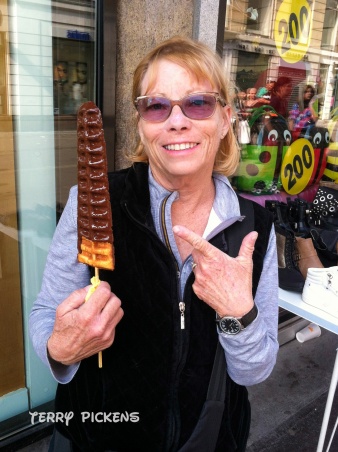 Back road eating is part of the experience of your adventure. Eat locally whenever you can, try to stay away from franchise establishments whenever possible. Check out where the tourists aren’t, head down that backstreet. I have found if it does not have an English menu you have a good chance of eating a very nice inexpensive meal with the locals. I am no gourmet and don’t want to eat like one, give me a good, filling home cooked meal anytime. That street vendor, dive or dinner full of customers probably has exceptional food for a reasonable price. Every country or locality has its specialty; you must try. Don’t ask locals where you should eat but ask where they would go for {breakfast, lunch or dinner} when they go out to eat. This will usually get you to a good local establishment away from the tourists rather than where they think you will be comfortable. In Philadelphia, USA while walking the Heritage Trail I noticed a security guard outside a hotel and kindly asked him where he would go for a nice quick lunch and he gave directions to a small bar-sandwich shop about a block away that had wonderful meals. In Venice leaving the main tourist streets and walking the back streets and alleys a very nice restaurant was found right on one of the smaller canals where a local family was holding a birthday party. No English menu out front or inside so out came the translation book, ordered the plate of the day and it was wonderful and very reasonably priced.
Back road eating is part of the experience of your adventure. Eat locally whenever you can, try to stay away from franchise establishments whenever possible. Check out where the tourists aren’t, head down that backstreet. I have found if it does not have an English menu you have a good chance of eating a very nice inexpensive meal with the locals. I am no gourmet and don’t want to eat like one, give me a good, filling home cooked meal anytime. That street vendor, dive or dinner full of customers probably has exceptional food for a reasonable price. Every country or locality has its specialty; you must try. Don’t ask locals where you should eat but ask where they would go for {breakfast, lunch or dinner} when they go out to eat. This will usually get you to a good local establishment away from the tourists rather than where they think you will be comfortable. In Philadelphia, USA while walking the Heritage Trail I noticed a security guard outside a hotel and kindly asked him where he would go for a nice quick lunch and he gave directions to a small bar-sandwich shop about a block away that had wonderful meals. In Venice leaving the main tourist streets and walking the back streets and alleys a very nice restaurant was found right on one of the smaller canals where a local family was holding a birthday party. No English menu out front or inside so out came the translation book, ordered the plate of the day and it was wonderful and very reasonably priced.

Lake
Then there also is that picnic lunch; eat under the trees, in a park or under the stars, what a wonderful experience you can have for little money. In Oslo out exploring on a Holiday when all the eating establishments were closed, I ended up getting some hot dogs, chips and drinks and eating in Frogner Park with all the people sunning themselves enjoying the beautiful weather.
Itinerary planning:
Use Guide Books, maps, TI websites, travel websites and travel reviews in your discovery of a location. In the infancy of planning a trip, read as much as you can about your intended destination. Do not be afraid to buy travel books and GOOGLE all you want and check out blogs of other travelers. The prices of the books and time spent in cyberspace are cheap for the unforgettable experiences they will bring. Remember others have already done the homework for you; use it so you don’t waste a minute of your time while traveling. Make a list of “must-see-and-do” places to visit, sights etc. Check out opening times and try to go on off times and hours to get a better experience away from the crowds.
Then the fun begins . . . the extensive homework to plan routes, lodging, visiting, tours, etc. Always leave wiggle room in your itinerary for unexpected gems found along the way and don’t feel a need to stick with a schedule or itinerary faithfully. That person you meet on the road might just have some local knowledge that will add to the experience. (I have said this before, about wiggle room, but it is important).
It as learned in Sarlat, France staying at a family rum B&B in which we were the only guests that night. We came down for breakfast at their Dining Room table the next morning and the husband sat down with us and asked where we had been and where we were going. He quickly pulled out his maps and gave us several recommendations’ on sites and towns to visit along our route. It was a shame this travel day did not include any free time, but these places were filed away for future travels.
 The trip planning that was done was sometimes quite extensive. Using our France trip by car as an example; after gathering up the Guide Books and both of us sharing web sites we found, we did separate research coming up with a list of places we each wanted to visit, attractions to see and museums to visit. Then, sharing the lists, the sites were narrowed down to the locations that could be accommodated within the time frame. It was then that out came the maps and copying the pages of France began. Taping the sections together we ending up with a complete map about 7 foot by 7 foot. From there the cities we wished to visit were highlighted, then a quick look for smaller roads away from toll roads to enjoy the scenery of France. This highlighted line was then transferred to the map book, which was taken on the trip. Mileage collected, the time was determined for leisurely travel and time was added for this and that and then the time in each city to visit sights. Sometimes toll roads were necessary to visit everything we wished to see. This method worked for us as we both enjoyed the same interests and 95% of the sites on the lists matched, the rest of the 5% was on the others “if we have time” list. Then all the individual guidebooks, maps, hours of operation and reservations were made for the individual sites. I know this isn’t for everyone and yes it was a lot of planning but boy did we see a lot and everything we wanted without tiring ourselves out too much.
The trip planning that was done was sometimes quite extensive. Using our France trip by car as an example; after gathering up the Guide Books and both of us sharing web sites we found, we did separate research coming up with a list of places we each wanted to visit, attractions to see and museums to visit. Then, sharing the lists, the sites were narrowed down to the locations that could be accommodated within the time frame. It was then that out came the maps and copying the pages of France began. Taping the sections together we ending up with a complete map about 7 foot by 7 foot. From there the cities we wished to visit were highlighted, then a quick look for smaller roads away from toll roads to enjoy the scenery of France. This highlighted line was then transferred to the map book, which was taken on the trip. Mileage collected, the time was determined for leisurely travel and time was added for this and that and then the time in each city to visit sights. Sometimes toll roads were necessary to visit everything we wished to see. This method worked for us as we both enjoyed the same interests and 95% of the sites on the lists matched, the rest of the 5% was on the others “if we have time” list. Then all the individual guidebooks, maps, hours of operation and reservations were made for the individual sites. I know this isn’t for everyone and yes it was a lot of planning but boy did we see a lot and everything we wanted without tiring ourselves out too much.
Planes, Trains and Automobiles how to get there and get around:

LAX Terminal
I am not a big fan of flying any more, I love to fly but with security, and the crowding of the seating it is getting to be something I will do to get somewhere and that is it. What I try to do is always fly non-stop if possible, so I do not have to lug my luggage around any more than needed. With carryon luggage I try to make seat reservations for the rear of the plane and a window seat, it gets me in sooner to snag a overhead compartment for my suitcase.
I really enjoy trains; they are convenient and relatively inexpensive. Train travel in the USA is not very convenient, lack of train lines and poor scheduling make train travel hard. In Europe it is a pleasure. Nicely appointed trains, even second class makes train travel enjoyable and so much nicer than coach or business class on the airlines.Second class is a lot cheaper and gets there at the same time as first class it is comfortable and you can enjoy the scenery as you travel between towns. Also if your train travel is longer think about an overnight train, it is convenient and will save you the cost of another night in a town and a lost day of travel. On an overnight train from Paris to Venice, we were in a compartment with 4 other people who were all very nice. We talked until bedtime trading travelers stories then unfolded the beds and slept well. Bunks are 3 high so ask for the one you what to quickly. I used my luggage as my pillow, it wasn’t too bad. Although there is always first class compartments you do not share if you feel enclined.

Our car for the month
Autos are my favorite way to travel; I can go at my own pace and to places that public transportation might not go to readily. I have driven in England, Scotland, Wales, France, Germany, Switzerland, Austria, Italy and naturally North America. I was able to see some fantastic sites and towns that I probably would not have seen. Rentals are one way but people from north America were able to lease a car if you use it longer than 17 days. This, to me, was a good option, it is just a little more expensive than a rental but you get full insurance plus great extras that could come in handy. And OH yes, you get a new car with low milage. The most milage we have had on a car when we picked it up was 15 kilometers.
Public transportation in the cities is just amazing. Busses, subways and trams are convenient and easy to navigate, just pay attention so you do not miss your station. Transit cards also make entering and exiting the system a breeze.
Ferries are also a good way to get between cities if near a coastal town. I used an overnight ferry between Oslo and Copenhagen and it was great; leaving at 4 PM a buffet dining room served diner then we were able to go up on the upper deck to enjoy the scenery before going to our stateroom late that night. The next morning it was back for an early buffet breakfast before docking at 9 AM in the morning ready to start a new day in a new city.
Where to stay:
B&B’s are individuals that rent rooms out in their houses, every experience I have had was outstanding. It was actually like staying at your aunts house with an extended family and a great breakfast. This is a outstanding way to meet people.
Air B&B rents rooms in homes, full apartments or rooms in family run hotels but no breakfast is provided. Staying in apartments is like being part of the community and you have your own kitchen, although you do not meet as many people this way.
Hotels are just that, they are nice and convenient in large cities, but impersonal most of the time.
I prefer B&B’s or Air B&B apartments.
What to take:
That is all subjective to your needs. Find different travelers’ packing lists and tailor to your needs. I wish to travel light so when I do take public transportation (and lugging luggage up and down stairs) I have an easier time getting around. – See TVP PACKING LIST
What to do before you leave:
- Vaccinations if required by country, some have to be started months in advance.
- Call your credit card and debt card to tell them where you will be going and for how long you will be gone. Terrible if you are on your trip and the card company puts a hold on your cards due to strange activity. Always gather the international phone numbers to call the card company in case of lost or stolen cards.
- Reservations: Rail passes, air flights, car rentals, rooms….
- Passport, Visa’s and travel insurance (if you think insurance is required for accidents, illness, missed flights, canceled tours, lost luggage, theft, emergency EVAC). Check your expiration date on your passport and get it renewed if too close to your arrival date back into your country. USA does not want it to expire a certain number of days prior to your arrival date back into the country. During the travels with my late wife travel insurance was a must as a medical condition she had might require sudden cancelation or abandonment of a trip.
- Any travel apps for your phone or tablet that you will need or use. (Airlines, Room rentals, City Tourist Information, Attractions….)
- Information on any airline baggage restrictions and luggage costs ($). These change constantly so please check with the FAA in the USA or any Country’s requirements you are visiting along with the Airline you are flying with.
- If you have any special medical needs gather all information on your condition and find medical facilities that can handle your condition. My late wife Jodi had a medical condition called Cystic Fibrosis that affected her lungs and made her diabetic. She went online to determine locations of clinics familiar with her condition we could go to if she had an episode over there. She also wrote her medical history down with all of her medications so I would not have to worry about remembering them during an emergency. Check with your Health Insurance Company for out of country restrictions. Carry prescriptions (medications and eyewear) if you happen to loose your medications and need to get them refilled.
Conditions vary from country to country so verify how medical emergencies are handled. Expenses might come out of your pocket then, if your lucky, get reimbursed from your insurance company. In Europe for a minor ailment go to a Pharmacy first, they can usually help you with medicines and if they can not they will refer you to a clinic or doctor.
- Does the country use a 12 or 24-hour clock. Understanding is important for opening hours, and train-airline schedules.
- Power usage of the country, America use 120v, Europe uses 240v. Any electronic equipment (chargers, shavers, hair dryers, curlers…) should be dual voltage or it will require a transformer.
- Type of electrical outlet used. American plugs are different than European. Also Great Britain and main land Europe’s are also different.
- How are dates written, in Europe they write the dates in a different order than the USA (day-month-year) and how are numbers written, in Europe they write 4’s and 7’s differently than the USA and the periods and commas have reverse rolls (5.000 is five thousand dollars and 5,75 is 5 dollars and 75 cents in American currency standards).
- Understand the differences in distance, weights and measures; Europe is on the metric system (kilometers, kilograms…)
- Learn at least the pleasantries of a countries language (hello, goodbye, thank you, that you do not speak the language…) this goes a long way in opening up a talk with people. Then if needed pull out the translation book and start using it, which usually opens them up more also. We have had people say they speak very little English and when we have tried we have found we can converse quite well with a mixture of the two languages. It shows respect.
- If you are visiting any attractions or museums check for the current opening hours, any free admission days, and any special closings. The free days are great at saving you money but understand the attraction might be more crowded. Also check for reservations at some museums, it will allow you to bi-pass the waiting line for tickets.
- Check each country or city for City Passes and Transit Passes. Some city passes also come with a transit option, which allows you to get on the transit system without buying individual tickets. These are great ways to save money and time as they usually pay for themselves after very minor usage and there might be other attractions or museums on the cards you might not have on your list but, hey it is free and I have some extra time to quickly pop in and look. Some City Cards can be mailed to you so you do not have to go to a Tourist Information Location to purchase one.
A countrywide pass was used when visiting England, Scotland and Wales that included national historic sites throughout the countries. It really paid off in that the map they provided located several sites we did not know about along our trip route that we stopped at, especially as they were basically free.
I have also used several City Passes, one being Oslo that included public transportation. It was nice to be able to jump on and off the busses, trams and street cars without worry and also to walk straight up to the entry booths of museums and attractions, show the card and walk right in. Both of these cards paid for themselves after 4-5 uses.
- Money is always fun to figure out. I prefer to go with very little dollars and arrive in the airport with no local currency in Europe. I first hit the ATM and pull out the maximum amount I am allowed as this saves a transaction fee. I have never had a problem with my ATM card. I use a credit card whenever I can as it uses a good currency exchange rate at the rate at the time of purchase. Just make sure it has a chip, which most USA cards have now.
- Mobile Phones – check with your carrier if your phone is compatible in the country you are going to and how you need to revise your plan. Mine can add international and I can use my phone but the cost is staggering. I just ignored the use of the phone on my trips and use the Wi-Fi to get email, and submit to social media for updates to me friends. It is so freeing to not worry about answering the phone. I guess I am from the age where we grew up without mobile phones so I am happy when I can be free of the brick and keep it in my backpack. Another option is to get a country SIM card and use it in a cheap phone, you then get a local number and rates.
- Cyber security – Use the latest operating system; password protect your devices as unit theft is prevalent in some countries; make sure you are on a secure Wi-Fi service from the TI, or Hotel. Some criminals like to make a false hotspot that is close to the location and uses similar hotspot name. I try not use cyber café or hotel computers as I don’t trust them, but that is me. All of the normal monthly bills have been put on automatic payments if possible so there is no worry about passwords, accounts or payments getting paid, but I always carry the numbers to call if I have to.
- Check with guidebooks, and fellow travelers about personal security for where you are visiting and what types of scams to be aware of and what to watch out for. There are many types of people that see a tourist as being very vulnerable as they are enjoying the sites and loose track of the surroundings. Be diligent anywhere even in a museum or attraction.
Finally:
Expect problems, be friendly and outgoing, ask questions, visit the locals.
In Oslo we actually stopped at a TGI Fridays, as we wanted something familiar and quick after 2 weeks on the road, and it was a great experience. All of the outside tables were filled so we went inside and ate in the downstairs bar area, the main dining room was upstairs. Our young waitress and bartender both came over through our whole meal and talked with us, asking questions and answering our questions as we were the only ones in the bar area. Our quick lunch ended up being a lot longer than anticipated but so enjoyable and worthwhile.
In Copenhagen the B&B we were staying at our room was in the basement of the house. A very nice finished area. When we arrived the owners had been called away on an emergency for our first few nights. To our surprise they left the key under the doormat and we had access to the entire house. We did not feel comfortable using any of their facilities upstairs while they were gone so only used the back door with direct access to our room and bath/laundry room in the basement. Through emails we said we very sorry we missed them, hoped their visit was pleasant and thank you for accommodating us when they had to leave. When they returned they were very apologetic and invited us to the wife’s birthday party the following night with their family and friends in the backyard. OH what a fun experience to be part of the family even for just one evening.
At the end of the day, know that you have used your time and spent your money wisely.
And always remember:
HAVE FUN
“May the calm be widespread, may the sea be as the smooth surface of the greenstone, and may the rays of sunshine forever dance along your path” Maori Prayer.
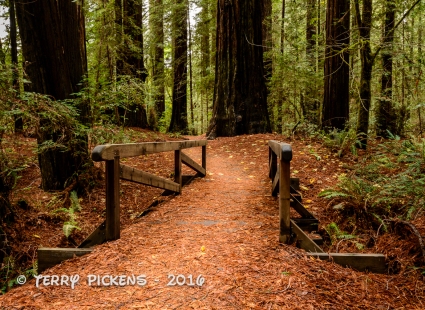



















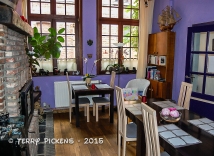







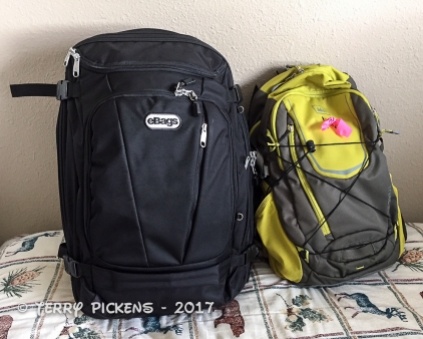



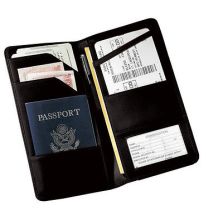

I’m amazed by how detailed tips you gave there. I used to love planning trips but nowadays time is so scarce that we only plan what we have to (eg for next trip to Australia we’ve booked a rental car and set dates for accommodation with friends as well as booked a hotel for the first night, stopover and for the time getting together with family) and look more into it during the flight and when there… all good that way too.
LikeLike
Yes we all have our own way of getting things done. My late wife and I were empty nesters and we had time to be able to do the planning, plus we both enjoyed the research. With her health and the list of different places we wanted to visit we had to set agendas so we could see all the things we wanted to as we did not know if we could get back there a second time. Our trips were usually 4 weeks long so we had the time to visit a lot. Some trips were taken at the spur of the moment also, with no planning, and they were just as fun., probably more at times You have a great time in Australia, I can not wait to read about your adventures there.
LikeLiked by 1 person
Oh I definitely can see why you would have been doing a lot of research with your wife, I’m sure the planning together was a part of the fun too, building up the excitement. I’ll get back to it at some point!
LikeLiked by 1 person
Sounds like a fun trip…
…however, I’m usually not very much prepared when travelling. I usually forget most things I need to take 🙂
LikeLike
Yes quite easy to forget things, But then you get to visit a market or store to explore more. We had some very specific items we needed to take for my wife’s medical condition, so a list was always used by both of us during packing. I still have my list and use it regularly as it is now just a part of my routine. Happy Travels.
LikeLiked by 1 person
Yes. I know. I mostly have to buy some thing or other. 🙂
Happy travels to you as well!
LikeLiked by 1 person